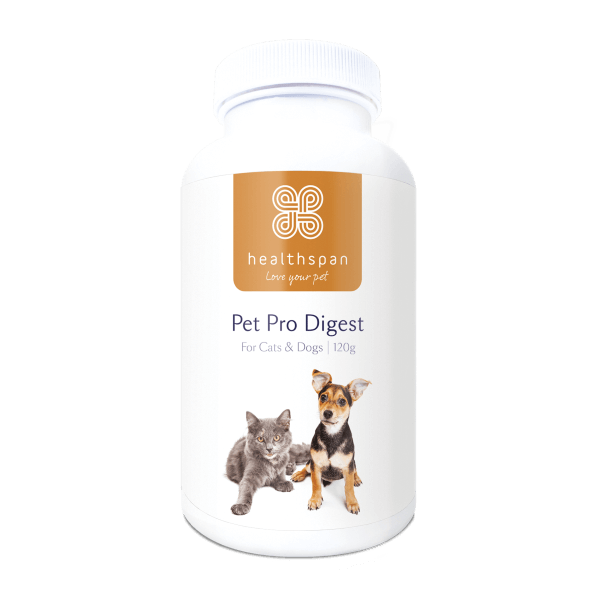From plaque to gingivitis, dental disease is one of the most common conditions vets see – and there are several reasons why it's important to tackle it.
Studies agree that at least 20% of dogs and cats have visible dental disease, but when animals are examined under anaesthesia, over 60% are found to be affected.
As well as being painful, dental disease can cause heart problems and kidney problems, so preventing – or treating – it is essential.
Types of dental problems
Periodontitis
The main dental disease that afflicts pets is periodontal disease, also called periodontitis.
Periodontitis is caused by bacteria and inflammation eating away at the periodontal ligaments (the structures that attach the teeth securely to the jawbone). Teeth then become loose, and eventually fall out.
Gingivitis
However, teeth don't go straight from healthy to periodontitis.
First, the build-up of bacteria (seen as a creamy yellow film on the teeth called 'plaque') attack the gum line, causing a reddening of the gums called gingivitis.
This inflammation of the gums is sore, but with the proper care it's reversible.
Once the bacteria have worked their way under the gums to the periodontal ligaments, however, the damage is irreversible and the tooth will eventually be lost.
The earlier dental disease is spotted, the higher the possibility of being able to reverse the disease and save your pet's teeth. Symptoms to look out for include:
- Smelly breath
- Your pet picking at their food, or dropping it from their mouths
- Changes in food preference
- Changes in appetite
- Red gums
- Grey-green 'tartar' on the teeth
- Wobbly, broken or missing teeth
Treating dental disease
Usually, your vet will recommend cleaning your pet's teeth under anaesthetic.
This is the same 'scale and polish' that we might have with the hygienist, but to get the teeth clean below the gumline, animals need to be heavily sedated or anaesthetised.
If your pet is not sedated during the cleaning process, their teeth may look cleaner, but the bacteria will still be under the gumline, eating away at the periodontal ligaments.
While your pet is anaethetised, your vet can also examine their teeth more closely for signs of disease, and remove any that already have damaged periodontal ligaments.
How to prevent dental disease
The best way to prevent dental disease in pets is to brush their teeth regularly at home. Studies have consistently shown that tooth brushing at least every other day helps to remove the bacteria responsible for plaque, tartar, and the eventual gingivitis and periodontitis that follow.
If your pet is amenable, it's also a good idea to inspect their teeth regularly, especially the molars at the back (by lifting their lips and moving them out of the way) to ensure you spot any problems early.
How to brush your pet's teeth
Although brushing your dog or cat's teeth might seem an impossible task, it often just takes a little time to get your pet used to it. Here are my top tips.
- Use a pet toothpaste. These don't contain fluoride and are flavoured to appeal to pets. The fish flavour is particularly attractive to cats.
- Any soft-bristled brush will do, or you can get finger brushes specially made for pets.
- Start small and build up. Over several days, get them used to licking the toothpaste from the brush, progress to opening their mouth, and then move on to actually brushing their teeth.
- If your pet doesn't sit still for long, focus on one side of the mouth at a time, alternating sides each day. You don't need to clean the inside of the teeth as this very rarely gets plaque or tartar build-up.
What else can I do?
Alongside toothbrushing (or instead of, if your pet is really reluctant) you can use a specially-crafted dental diet, as well as water additives (look for those recommended by the Veterinary Oral Health Council), or dental chews.
In addition, probiotic supplementation may improve dental health by changing the types of bacteria living in the mouth.

Pet Pro Digest
Designed to promote the healthy balance of live 'friendly' bacteria in your pet's digestive system
- Supports your pet's digestive and dental health
- Bifidobacterium lactis, Enterococcus faecium and fibre
Summary
Dental disease is one of the most common conditions affecting our pets and it has wide-ranging effects on their health.
- Adopt a preventative dental health regime (including the use of a probiotic) and clean their teeth regularly.
- Ask your vet about your pet's teeth if you spot anything untoward and follow their recommendations for treatment.
- Don't fall into the trap of ignoring mouth problems – if you treat them early, you can reverse the damage and save your pet's teeth.







